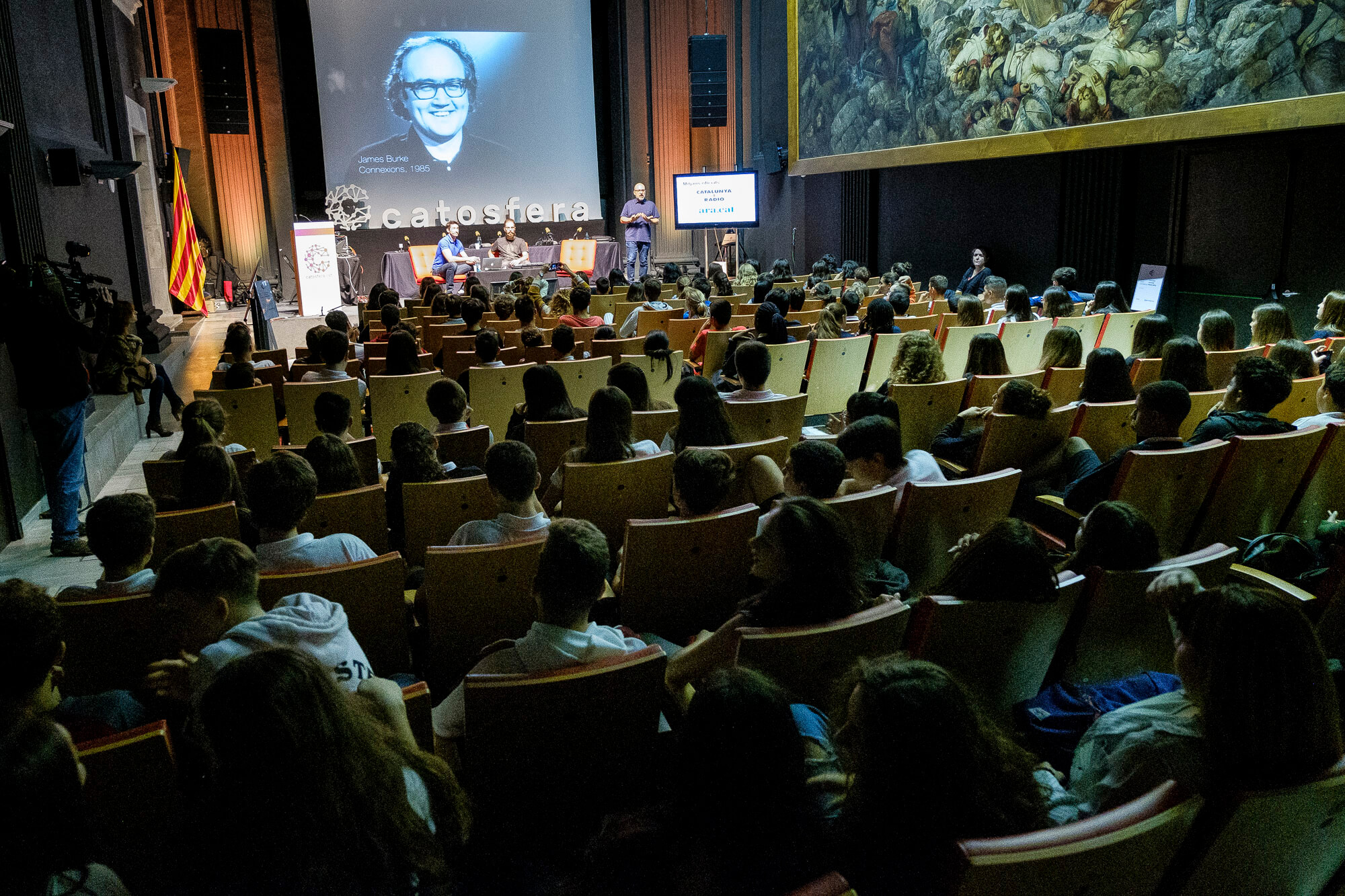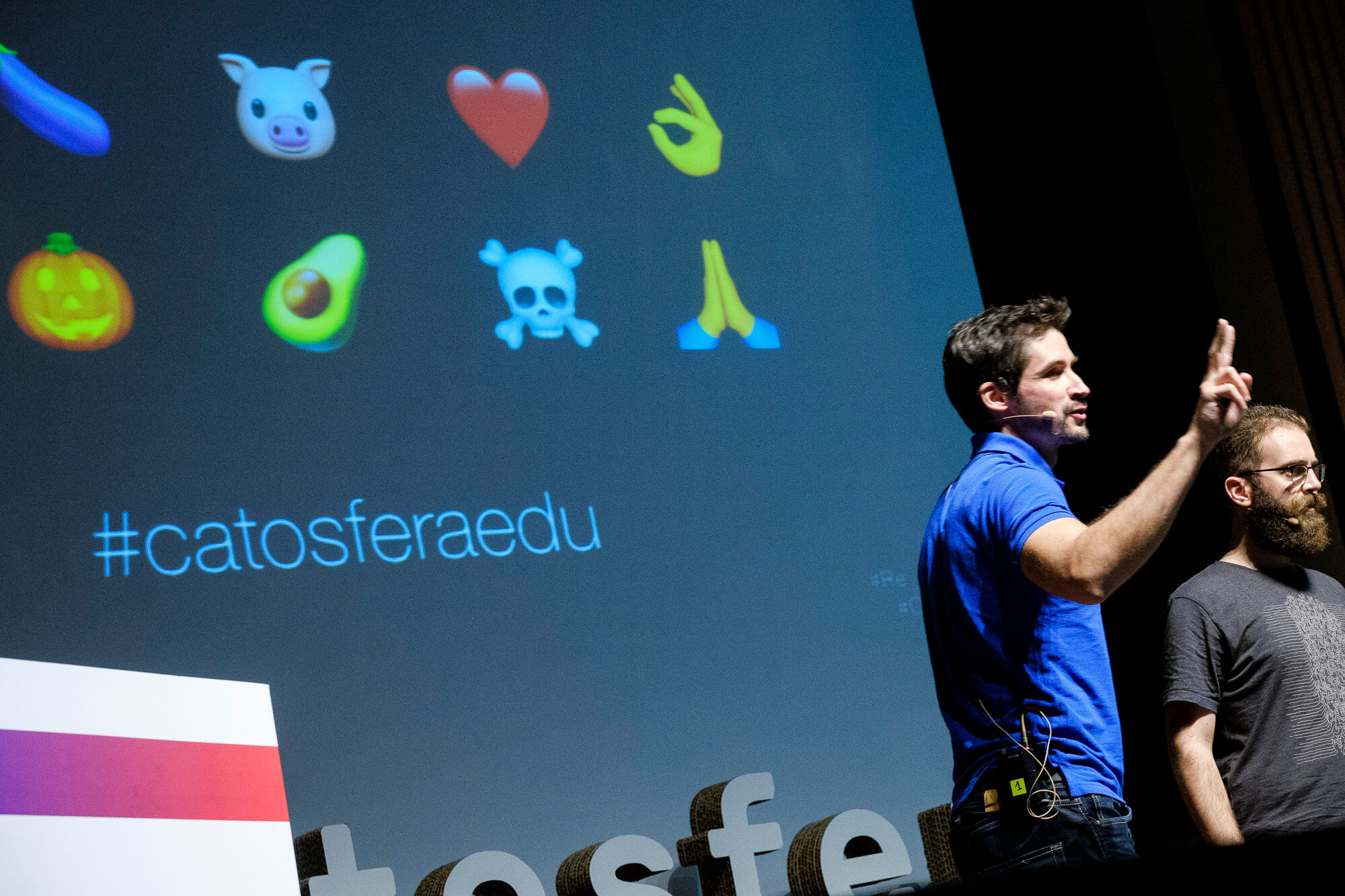Have you ever asked yourselves how digital art is created? And how it is “re-created”? We’ve often showed you projects that we take part in where digital art is the protagonist, but today we’re here to show you how it is actually created. We are going to talk about re-creative programming.
Programming, as a base, we could say is decomposing difficult problems into a series of simpler problems in order to reach a solution, to learn.

The past 18th, 19th and 20th of October, the Catosfera took place in Girona, and Mortensen was present with an activity oriented to GCSE students, focused on explaining that programming can also be creative and fun. We emphasized on the importance of learning how to program and on recreative programming as a base of learning and the solution to all types of problems; programming helps to detect and synthesize the problem to reach a solution in a quicker way.

But it didn’t have to be all theory! After Josep Maria explained the base of recreative programming and its origins to the 146 students that came from different high schools, the time came to move on to the more practical part.
Quico and Jordi leaded the practical session, creating visual and acoustic collaborative digital art through Twitter, using emoji language. No, it’s not so complicated as it sound. Or maybe it is. Okay, let’s try to explain it:
The students became creators. Some of them, created graphs that they could manipulate through a midi keyboard that their peers in the audience gave rhythm to, sending emojis via Twitter using the hashtag #catosferaedu. Each emoji was related to a different rhythm and when a tweet with this emoji was received, the rhythm, both visual and acoustic, changed and with it so did the artistic creation. The students created an artistic piece in a collaborative way.
These are the emojis which we played with to change the rhythm of the piece:

Watch Mortensen’s full participation in this video:


